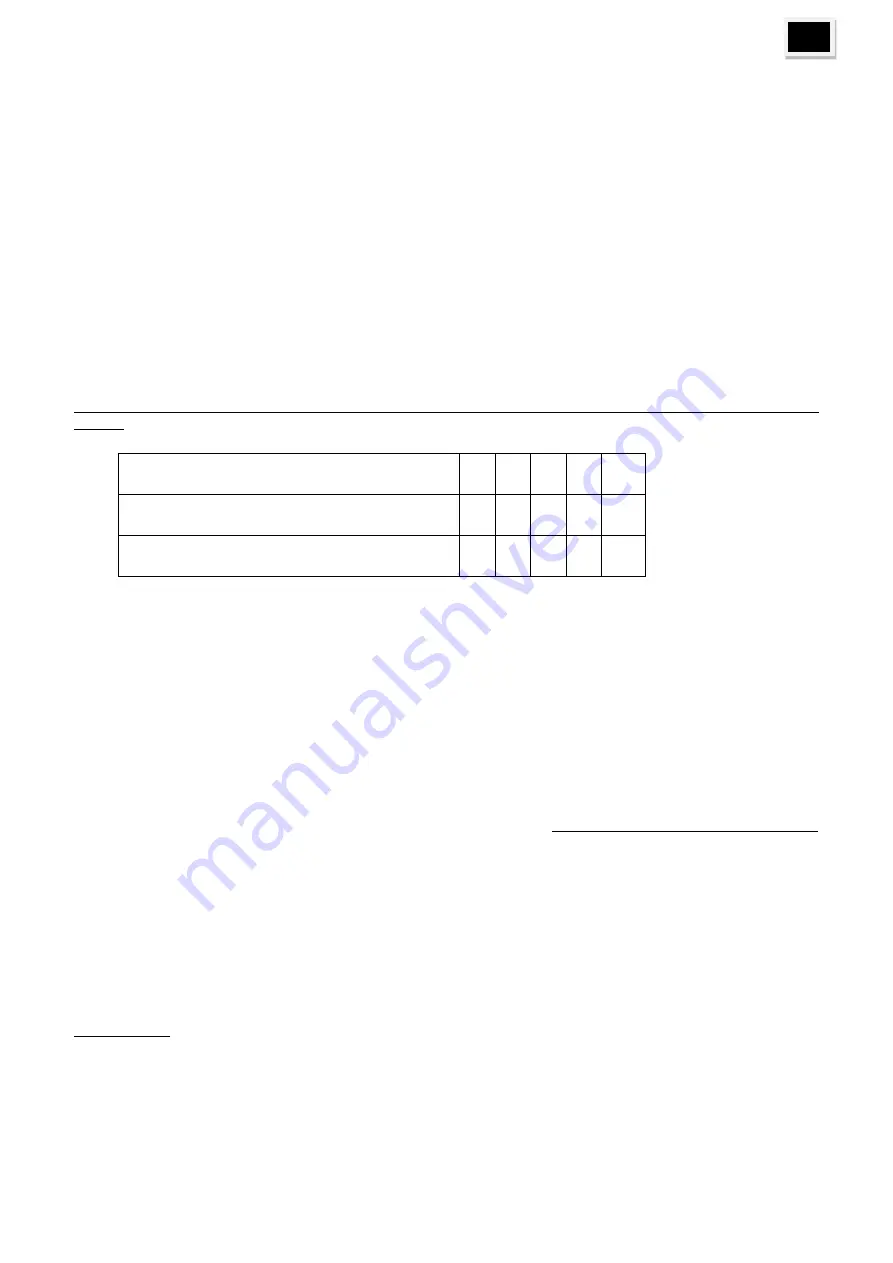
18
EN
This sludge removal unit is designed for cleaning pipes with an inner diameter up to 2“.
When sanitizing installations contaminated with legionella, we advise to clean with a pulsated water/air mix
before applying disinfection measures.
Before any connection to drinking water systems, always check that the sludge removal unit and all accessories
(such as pipes, pressure regulators) are perfectly clean in terms of hygiene.
In general terms, always observe the following points when cleaning:
1. The builder or architect must be present during cleaning. Once cleaning performed, the corresponding rinsing
protocol must be defined.
2. Drinking water used for cleaning must be filtered.
3. Rinsing water must have a minimum flow rate of 0.5 m/s in the largest diameter pipe. To reach this flow rate,
there must be a minimum number of water inlets Diam. 15 open (see table). If despite this, the volumetric flow
required (the flow rate required) is still not achieved, the rate must be adjusted using a tank and a pump.
4. The hot and cold water pipes must be cleaned separately. Cleaning pipe systems is performed by sections.
As a general rule, each riser is considered to be a cleaning section. The pipe length in each cleaning sections
must not exceed 100m. Start with the riser located closer to the sludge removal unit. Should a riser be too
narrow to guarantee the minimum volumic flow rate in the distribution pipe, several risers will be combined in the
same cleaning section.
Minimum volumic flow and minimum number of water inlets to open for cleaning at a minimum flow rate of
0.5m/s:
Largest nominal diameter of the distribution pipe
ND
25 32 40 50
65
Minimum flow rate for complete filling of the Q
distribution pipes in l/min
15 25 38 59 100
Minimum number of collection points to open
ND 15
1
2
3
4
6
5. In each of the cleaning sections, the water collections are open floor by floor, starting from the bottom and
upwards, knowing that for each floor, the water collection farthest from the riser will be opened first. All other
water collections are then opened in the same « bottom up » sequence and from the « farthest from the riser to
the closest »
6. The cleaning time per current pipe metre must be 15 seconds minimum. In addition, each water collection
must be cleaned for about 2 minutes. Once the cleaning time is reached on the water collection opened last, the
water collections are closed in the reverse order of that observed upon opening.
7. After cleaning, the water inlet must be closed and the sludge removal unit stopped.
The power supply of the unit must then be switched off. Caution! The sludge removal unit must not be in the
tank filling mode. The sludge removal unit must be separated from the pipe cleaned. A new sealing test must
then be performed. To finish, perform the final proper installation of the pipes.
7- Start-up and comments on compressor maintenance
- On the information plate, check the network voltage matches the voltage indicated.
- Connect the plug into the appropriate power outlet. The plug supplied is of the 16A VDE type.
CAUTION
: Operation of the compressor is controlled automatically using the pressure regulator which, on the
one hand, stops the compressor once pressure in the container reaches the maximum value and, on the other
hand, restarts he compressor when pressure has dropped to the minimum value.
CAUTION
: Proper automatic operation of the compressor is indicated by compressed air flushing at each stop
of the motor.
7.1 Operation
Before starting the work, run the compressor for 10 minutes, with the air valve fully open, to allow mobile parts
to adapt.
Caution! Read carefully!
This compressor was neither designed nor manufactured for continuous use; it is advised not to run it at more
than 50% its capacity and not exceed a compressor continuous operating time of 15 minutes.
CAUTION
: Always install the compressor at a minimum distance of 50 cm from any obstacle likely to block the
air flow, hence cooling.
Summary of Contents for VIRAFAL
Page 57: ...57 EL 3 2 RCD RCD 3 3...
Page 58: ...58 EL 3 4 VIRAX 3 5...
Page 64: ...64 EL 7 2 5 5 5 bar ON 7 3 8 2002 96 CEE...
Page 93: ...93 RU 3 1 3 2 3 3...
Page 94: ...94 RU 3 4...
Page 95: ...95 RU VIRAX 3 5 3 6 VIRAFAL 30 C 40 DVGW DIN 1988 SVGW VGW DIN 1988 DIN 50930...
Page 100: ...100 RU 7 VDE 16 A 7 1 10 50 15 50 7 2 5 5 5 ON 7 3 a a N...
Page 101: ...101 RU 8 2002 96 CEE...
Page 119: ...119...
















































